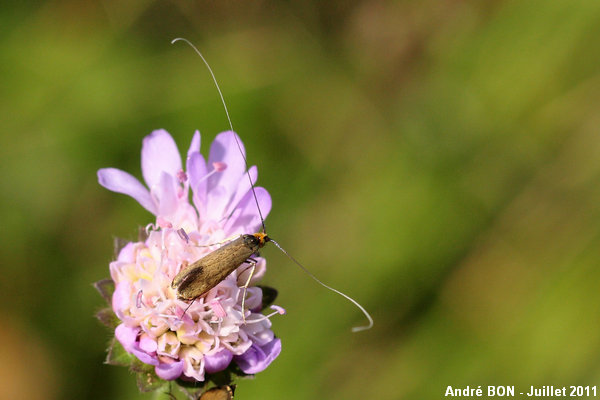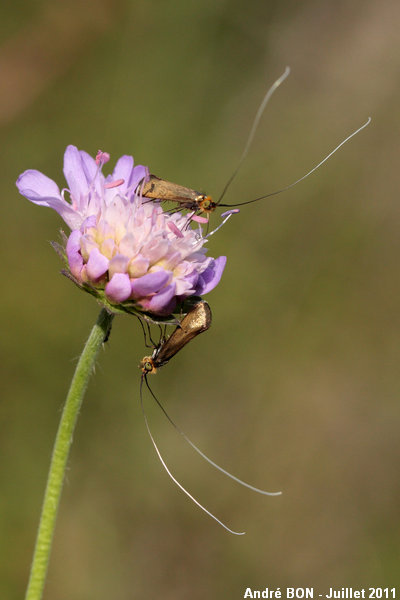

| Brassy Long-horn (Nemophora metallica (Poda, 1761)) |


|
|
Scientific name: Nemophora metallica (Poda, 1761) Common name: Brassy Long-horn Other names: Scabious Longhorn Moth French name: Adèle de la Scabieuse Order: Lepidoptera Suborder: Microlepidoptera Family: Adelidae Subfamily: Adelinae Wingspan: 15-20 mm. Biotope: Dry meadows with Scabious flowers. Geographic area: Europe, north to the centre of Sweden. Flight time: June to August. Number of generations : 1 Caterpillar: White with the front parts black. It feeds on seeds and after on leaves. Then it goes down on the ground where it shelters inside a case made of attached debris. Host plant: Field Scabious (Knautia arvensis) and Small Scabious (Scabiosa columbaria). |
Adelidae moths are noticeable by the length of their antennae, especially for males. Male Scabious Longhorn Moths show antennae which are three times the length of the fore wings. Those of females are half this length. The Scabious Longhorn Moth shows very large green eyes surrounded by orange hairs. The antennae are dark and not thickened on their first third, then they turn to white. The wings show almost parallel costal edge and inner edge, this is one characteristic of the Nemophora genus. Members of the Adela genus have clearly more triangular wings. The fore wings are a uniform metallic bronze colour. There is sometimes a darker area near the margin. |
| [To know more about the Brassy Long-horn] [Next picture] [Top] |

|
I has been very easy to shoot pictures of Scabious Longhorn Moths. They kindly stood landed on the host plant during the whole photo session. |
| [To know more about the Brassy Long-horn] [Previous picture] [Top] |

|
All the observed moths were showing antennae of about the same length. Males or females? I have not been able to answer as I find the antennae a little too long for females and a little too short for males (based on what I have read in documentation). I will try, one of these following years, to observe males and females simultaneously to understand. |